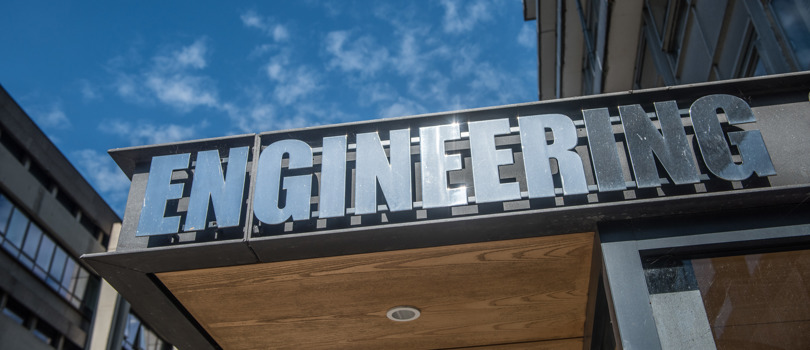The Structural Engineering and Materials Group research and people involved

Structural Engineering and Materials
Our Research
Our research activities can be categorised under the following general headings: i) structural assessment and design, ii) experimental testing, iii) sensing and structural health monitoring, and iv) deployable structures.
Structural Assessment and Design
The group develops new modelling tools to conduct the assessment and design of structures ranging from museum artefacts to metallic wind turbines. Examples of work in this area include:
- The Dynamic response of structures exhibiting rocking structures and components.
- The dynamic response of infrastructure elements such as metallic, reinforced concrete and masonry bridges, monumental buildings or wind turbines, as well as museum exhibits to earthquakes, traffic induced vibrations, anthropogenic and environmental excitations.
- Damage assessment and finite element modelling of monumental buildings and bridges influenced by underground construction (e.g., tunnelling and deep excavation).
- Response of metallic (carbon steel, stainless steel, aluminium) structures to severe loads.
- Development of fabricated components (including wire-arc additive manufacturing), welded connections and thin-walled structures, with a particular focus on instabilities and fatigue.
Experimental Testing
The group pursues synergetic directions within the context of laboratory testing:
- Our hydraulic actuators allow isolated testing of structural components with a focus on developing real-time hybrid testing algorithms.
- Our bi-axial shake table enables tests on small-scale structures to validate models and monitoring algorithms.
- We test metallic structural components (e.g. duplex high capacity hybrid connections) under extreme loads to explore their stability and strength. These tests inform our understanding of the lifecycle performance of components in different environments, such as high temperature or corrosive surroundings.
- We conduct a range of elementary loading tests on masonry assemblies and walls. These tests are designed to enable improved mechanical characterisation of masonry in the laboratory and in-situ.
- We devise smaller scale experiments for testing the mechanical behaviour of origami-based metamaterials. We use 3D printing tools to fabricate these complex geometries.
Sensing and Structural Health Monitoring
The group works in the areas of sensing and structural health monitoring.
- Our work aims to capture the as-is state of structures. This includes the development of new in-situ tests for material identification and deep-learning based techniques to characterise structural geometry and defects from point clouds and photographs.
- We develop observability, system identification and vibration monitoring algorithms using vibrational sensors, such as accelerometers, gps, and strain sensors.
- We develop new image and point cloud data processing techniques to enable non-contact full-field displacement and strain monitoring in field conditions.
- These algorithms enable long-term monitoring and damage detection of infrastructure elements such as metallic and masonry bridges, wind turbines, monumental buildings and museum exhibits.
- We use this information within the framework of probabilistic lifecycle assessment, to extend the service life of structural and non-structural components by prioritising maintenance activities.
Our monitoring equipment is portable, and we have extensive experience with field applications.
Deployable Structures
The special structures group engages on the design of deployable and origami structures, a family of unconventional structures capable of large shape changes.
- For deployable mechanism assemblies, our focus is on design and kinematic modelling of mechanism modules and their tessellation. We analyse the behaviour of origami and deployable structures throughout their whole kinematic range. The results have allowed for efficient packaging and subsequent orderly deployment of large aerospace structures, e.g., solar panels and antennas, design of soft robotic grippers able to conform to the shape of the objects, and development of morphing metamaterials with properties such as negative Poisson’s ratio and large porosity variation.
- Our research on deformable deployable structures is aimed at applications ranging from medical implanted through minimum invasive surgery, e.g., flow diversion stent for treating cerebral aneurysms, to tubular or sandwich structures that process superb energy absorption capability during an impact.
- Study on the kinematic behaviour of origami objects have enabled us to develop new devices beyond typical structural engineering applications. For instance, we have created origami inspired electromagnetic metamaterials that can be mechanically actuated to modulate the electromagnetic response of RF and mm wave devices.
Deployable Structures - Materials - Metamaterials - Resilience - Sensing and Structural Health Monitoring - Structural Engineering - Sustainability






